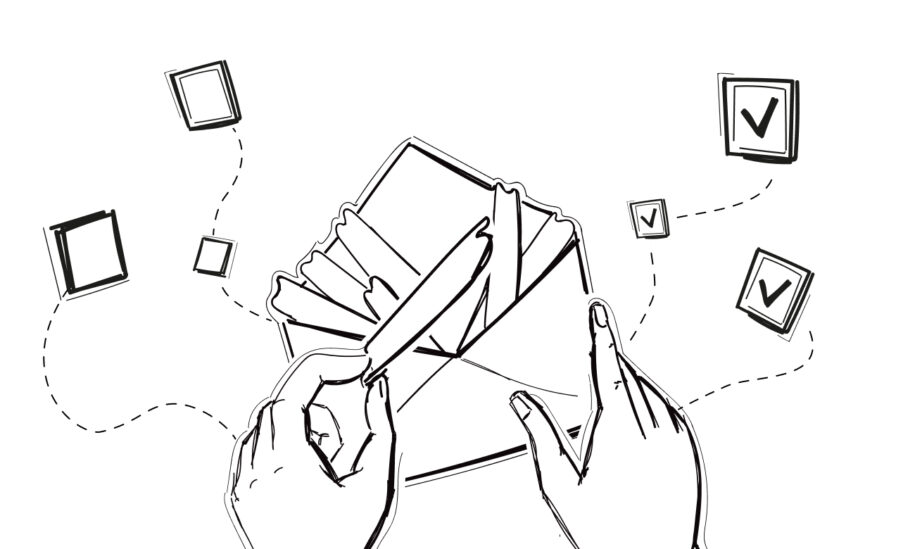Cold emailing is evolving every day and becoming less predictable each day. Industry analysts and experts say that the future of cold emailing will uncover trends never seen before. Many redundant trends will die, and more relevant trends will arise. This article will explore the trends and predictions shaping cold outreach strategies in the upcoming decade.
8 Trends That’ll Rule The Future Of Cold Emailing
Cold emailing has evolved a lot this decade. Here are what will become prominent in the coming years.
Personalisation, personalisation, personalisation
The world of cold emailing has yet to be done with personalisation. They’ll gain even more importance in the future. Tailoring messages to target customers’ pain points will boost engagement. Hence, ultra-personalized emails will thrive this decade. Audiences will ignore generic pitches, only specific messages will get through. Therefore, B2B SaaS companies need to learn to address the particular needs of each recipient. Sales reps must use a more data-driven approach to boost their response rates.
Example: If you’re providing SaaS solutions for a healthcare company, showing how your product can improve its efficiency will be crucial. Your email should show how your product will make them better.
Automation And AI
With the boom of AI, automation in cold emailing will only increase. The future of cold emailing contains intensive use of automation software to track customer data. AI will help understand the recipient’s behaviour, predict the best send times, and generate personalised content at scale. Using AI, sales teams can automatically track email opens and responses. Hence, they can focus better on the warm leads and drive growth.
ABM Integration
ABM stands for account-based marketing. It will integrate with cold emailing to help sales reps target high-value accounts strategically. With big clients, reaching out to key decision-makers makes all the difference. ABM data combined with cold email campaign insights will allow you to be more specific. Hence, you’ll have more help closing deals with big clients in the future of cold emailing.
Example: To target clients in the e-commerce sector, you can find the target accounts using ABM. Then conducting outreach using their specific pain points will make the task easier.
The Rise Of Video Content
While emailing is a textual form of communication, it will coexist with video content in the future of cold emailing. Including interactive elements in cold emails will enhance engagement and foster deeper connections with prospects. While giving product demos, the client can receive an interactive video that demonstrates how the product works.
Example: you can include video content in emails by providing live chat options or making product demos fun using graphics. The idea is to engage the customer instead of listing all the product benefits in a long paragraph.
Better Data Privacy And Compliance
Another optimistic thing that awaits us in the future of cold emailing is stricter data policies. More stringent regulations will govern user data protection, and consent will be more vital. We can expect more demanding legal repercussions. So companies will implement double opt-ins and a clear opt-out option to respect their recipient’s privacy.
Also Read: Overcoming Cold Email Objections: Tips For Handling
Omni Channel Outreach
Cold emailing will be part of an omnichannel strategy. In this decade, more cohesive and consistent messaging will win. So companies will combine their social media, email, and other channels to increase brand visibility and trust. A prospect who gets your cold email can also get relevant messaging on their social media ads in the future. This strategy will favour companies greatly because it can reinforce their message without needing too many follow-ups via email.
The Rise Of Predictive Analytics
Predictive analytics involves closely monitoring prospect behaviour to get the most accurate data and insights. Using these insights, the targets can become very specific. So, the chances of hitting suitable targets will increase exponentially. Using AI patterns and other tools, cold emails can be hyper-personalized.
Predictive analytics can inform us of when the prospect will most likely make a purchasing decision. This analysis will allow sales reps to be more strategic with their follow-ups in the future of cold emailing. Historical data and patterns can also be vividly analysed using analytics. So, there’s no excuse left to deliver content that doesn’t resonate with your prospects.
Better Lead Scoring And Segmentation
One of the best ways to grab good leads is through segmentation. Making separate lists of prospects based on where they are in the funnel helps make smarter decisions. Categorising leads will improve so that sales teams can double down on the most promising prospects. Knowing how likely a prospect is to convert, sales teams can allocate their resources more efficiently. All this ultimately drives conversion and growth.
Conclusion
The future of cold emailing holds many exciting surprises, many of which are optimistic. Tech advancements will help us understand consumer patterns like never before. All these have to be executed carefully to have a smoother AI adoption. Personalisation is taking centre stage in determining the quality of a cold email this decade. Differentiating your email and getting the point across simplest will be very important.
These changes will give rise to a new chapter in the B2B SaaS space. Companies will have to adapt to consumer demand and redefine their emailing strategy. Integration of emails with social media is also a significant development. This will create a more consistent message for the audience. Overall the future of cold emails looks promising and exciting.
Follow Zohort for more updates.


